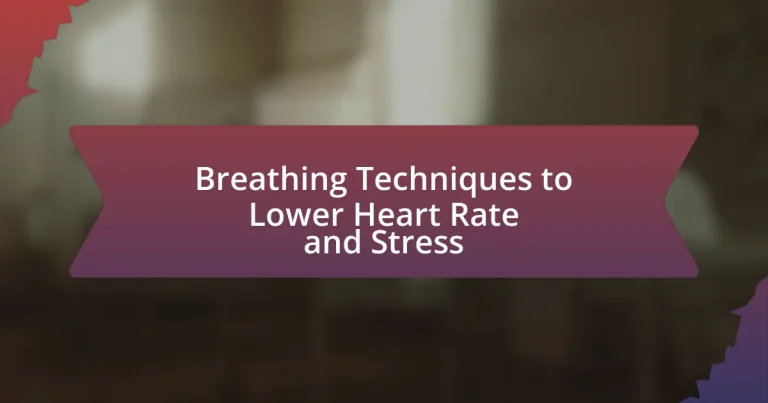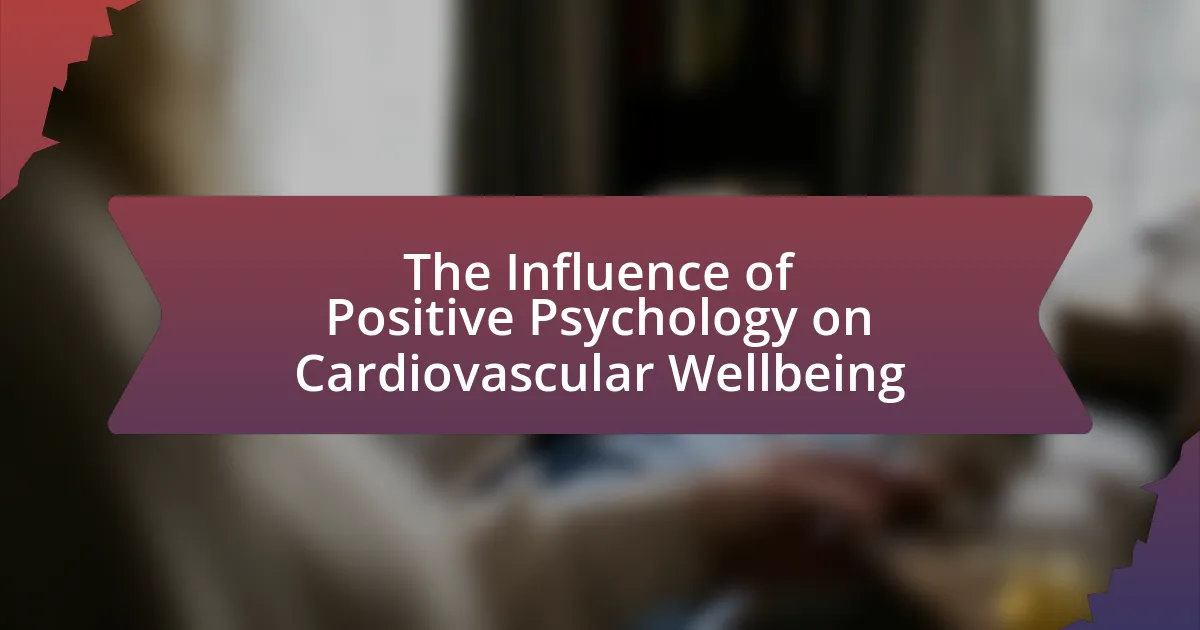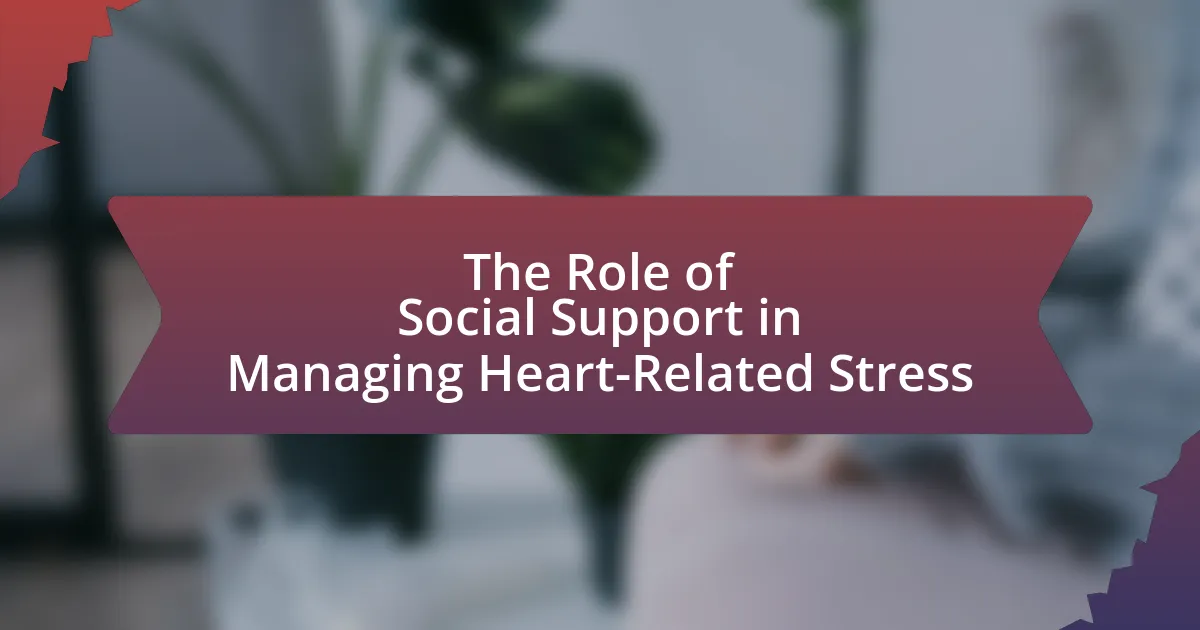Breathing techniques, such as deep diaphragmatic breathing, box breathing, and the 4-7-8 method, are effective strategies for lowering heart rate and reducing stress. These techniques activate the parasympathetic nervous system, leading to physiological changes that promote relaxation, including decreased heart rate and lower cortisol levels. Research supports the efficacy of these methods in managing anxiety and enhancing emotional regulation. The article explores the physiological mechanisms behind these techniques, their impact on the autonomic nervous system, and practical tips for incorporating them into daily life for long-term stress management.
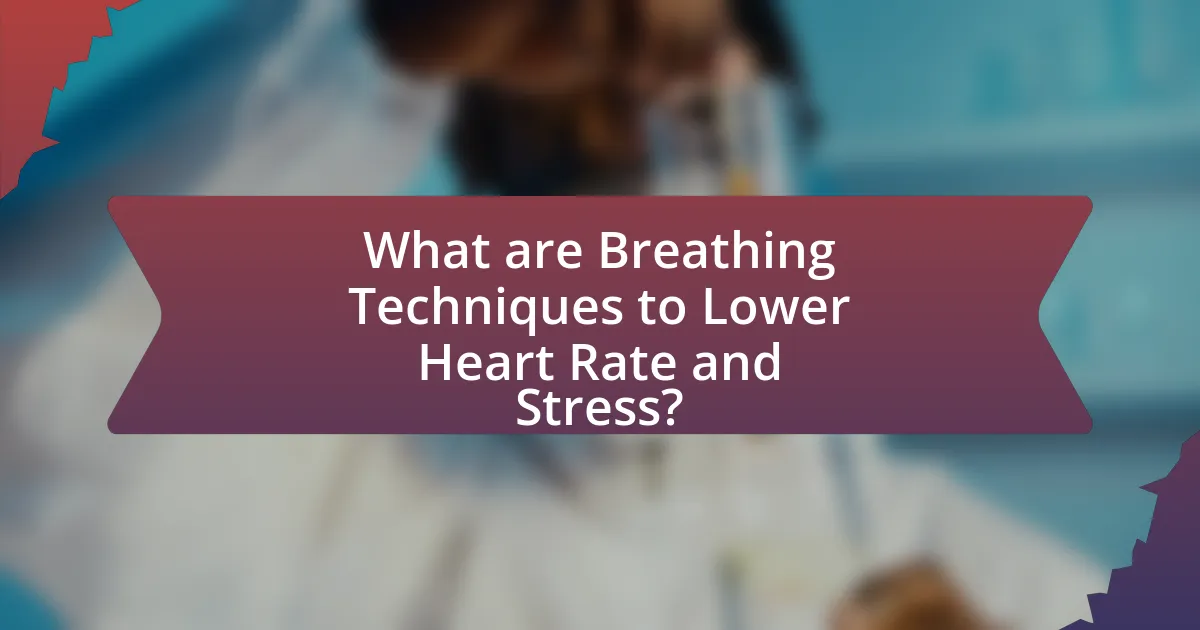
What are Breathing Techniques to Lower Heart Rate and Stress?
Breathing techniques to lower heart rate and stress include deep diaphragmatic breathing, box breathing, and 4-7-8 breathing. Deep diaphragmatic breathing involves inhaling deeply through the nose, allowing the abdomen to expand, and exhaling slowly through the mouth, which activates the body’s relaxation response. Box breathing consists of inhaling for four counts, holding the breath for four counts, exhaling for four counts, and holding again for four counts, effectively calming the nervous system. The 4-7-8 technique requires inhaling for four counts, holding the breath for seven counts, and exhaling for eight counts, which has been shown to reduce anxiety and promote relaxation. Research indicates that these techniques can significantly decrease heart rate and stress levels by enhancing parasympathetic nervous system activity, thereby promoting a state of calm.
How do breathing techniques influence heart rate and stress levels?
Breathing techniques significantly influence heart rate and stress levels by promoting relaxation and activating the parasympathetic nervous system. When individuals engage in controlled breathing exercises, such as deep diaphragmatic breathing, their heart rate typically decreases as the body shifts from a state of stress (sympathetic activation) to a state of calm. Research indicates that slow, deep breathing can lower cortisol levels, a hormone associated with stress, thereby reducing overall stress levels. A study published in the Journal of Clinical Psychology found that participants who practiced deep breathing reported lower anxiety and a reduction in heart rate variability, demonstrating the effectiveness of these techniques in managing stress and heart rate.
What physiological changes occur during controlled breathing?
Controlled breathing induces several physiological changes, including decreased heart rate, lowered blood pressure, and enhanced oxygen exchange. These changes occur as the body shifts from a sympathetic (fight or flight) state to a parasympathetic (rest and digest) state, promoting relaxation. Research indicates that controlled breathing can activate the vagus nerve, which plays a crucial role in regulating heart rate and stress response. A study published in the Journal of Clinical Psychology found that participants practicing controlled breathing techniques experienced significant reductions in anxiety and physiological stress markers, demonstrating the effectiveness of these techniques in promoting overall well-being.
How does the autonomic nervous system respond to breathing techniques?
The autonomic nervous system responds to breathing techniques by modulating its sympathetic and parasympathetic branches, leading to physiological changes that promote relaxation and stress reduction. Specifically, slow, deep breathing activates the parasympathetic nervous system, which decreases heart rate and lowers blood pressure, counteracting the stress-induced activation of the sympathetic nervous system. Research indicates that practices such as diaphragmatic breathing can enhance vagal tone, which is associated with improved emotional regulation and reduced anxiety levels. Studies have shown that controlled breathing can significantly lower cortisol levels, a hormone linked to stress, thereby validating the effectiveness of breathing techniques in influencing autonomic nervous system responses.
Why are breathing techniques important for stress management?
Breathing techniques are important for stress management because they activate the body’s relaxation response, reducing physiological stress indicators. When individuals practice controlled breathing, such as deep diaphragmatic breathing, they can lower heart rate and decrease levels of cortisol, the stress hormone. Research published in the journal “Health Psychology” by Brown and Gerbarg (2005) demonstrates that specific breathing exercises can significantly reduce anxiety and improve emotional regulation. This evidence supports the effectiveness of breathing techniques in managing stress and promoting overall well-being.
What role does breath play in emotional regulation?
Breath plays a crucial role in emotional regulation by influencing the autonomic nervous system, which controls stress responses. Controlled breathing techniques, such as deep diaphragmatic breathing, activate the parasympathetic nervous system, leading to a reduction in heart rate and stress levels. Research indicates that slow, deep breathing can lower cortisol levels, a hormone associated with stress, thereby enhancing emotional stability and resilience. Studies have shown that individuals who practice breath-focused techniques report lower anxiety and improved mood, demonstrating the direct impact of breath on emotional well-being.
How can breathing techniques enhance mental clarity and focus?
Breathing techniques enhance mental clarity and focus by increasing oxygen flow to the brain and reducing stress levels. When individuals practice controlled breathing, such as deep diaphragmatic breathing, they stimulate the parasympathetic nervous system, which promotes relaxation and decreases cortisol levels. Research published in the journal “Frontiers in Human Neuroscience” by Brown and Gerbarg (2005) indicates that such techniques can improve cognitive function and attention by fostering a calm mental state. This physiological response not only sharpens focus but also enhances overall mental performance, making breathing techniques a valuable tool for improving clarity and concentration.
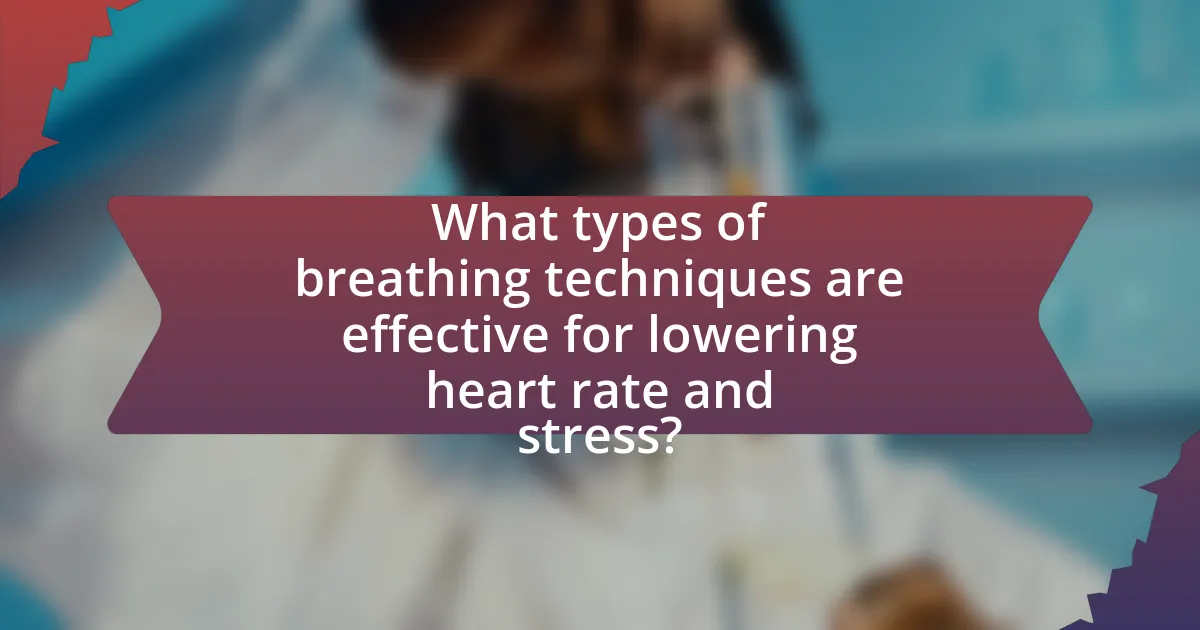
What types of breathing techniques are effective for lowering heart rate and stress?
Diaphragmatic breathing, also known as abdominal or deep breathing, is effective for lowering heart rate and stress. This technique involves inhaling deeply through the nose, allowing the diaphragm to expand, and then exhaling slowly through the mouth. Research indicates that diaphragmatic breathing activates the parasympathetic nervous system, which helps reduce heart rate and promote relaxation. A study published in the Journal of Clinical Psychology found that participants who practiced diaphragmatic breathing experienced significant reductions in stress levels and heart rate compared to those who did not engage in this technique. Other effective techniques include box breathing, where individuals inhale, hold, exhale, and hold again for equal counts, and 4-7-8 breathing, which involves inhaling for four seconds, holding for seven seconds, and exhaling for eight seconds. Both methods have been shown to enhance relaxation and decrease physiological stress responses.
What are the most commonly practiced breathing techniques?
The most commonly practiced breathing techniques include diaphragmatic breathing, box breathing, and 4-7-8 breathing. Diaphragmatic breathing, also known as abdominal or belly breathing, involves inhaling deeply through the nose, allowing the diaphragm to expand, and exhaling slowly through the mouth. This technique has been shown to reduce stress and lower heart rate by promoting relaxation. Box breathing consists of inhaling for a count of four, holding the breath for four, exhaling for four, and holding again for four. This method is often used by athletes and military personnel to enhance focus and calmness. The 4-7-8 breathing technique involves inhaling for four seconds, holding the breath for seven seconds, and exhaling for eight seconds, which can help to reduce anxiety and improve sleep quality. These techniques are widely recognized for their effectiveness in managing stress and promoting overall well-being.
How does diaphragmatic breathing work?
Diaphragmatic breathing works by engaging the diaphragm, a muscle located beneath the lungs, to facilitate deeper inhalation and exhalation. When a person inhales, the diaphragm contracts and moves downward, allowing the lungs to expand fully and fill with air, which increases oxygen intake. This technique promotes relaxation and reduces stress by activating the parasympathetic nervous system, which counteracts the stress response. Research indicates that diaphragmatic breathing can lower heart rate and blood pressure, contributing to overall stress reduction and improved emotional well-being.
What is the 4-7-8 breathing technique and how is it performed?
The 4-7-8 breathing technique is a relaxation exercise designed to reduce stress and promote calmness. It is performed by inhaling through the nose for a count of four, holding the breath for a count of seven, and exhaling through the mouth for a count of eight. This cycle is typically repeated four times. The technique is based on the principles of pranayama, an ancient yogic practice, and is believed to help regulate the body’s stress response by activating the parasympathetic nervous system, which promotes relaxation.
How do different breathing techniques compare in effectiveness?
Different breathing techniques vary in effectiveness for lowering heart rate and stress, with methods like diaphragmatic breathing and box breathing showing significant benefits. Diaphragmatic breathing, which involves deep inhalation through the nose and exhalation through the mouth, has been shown to activate the parasympathetic nervous system, leading to reduced heart rate and lower stress levels. A study published in the Journal of Clinical Psychology found that participants practicing diaphragmatic breathing experienced a 20% reduction in heart rate compared to those using shallow breathing techniques. Box breathing, characterized by equal counts of inhalation, retention, exhalation, and retention, has also been effective; research from the University of California demonstrated that this technique can decrease anxiety and improve focus, contributing to overall stress reduction. Thus, while both techniques are effective, diaphragmatic breathing may offer more pronounced physiological benefits.
Which techniques are best for immediate stress relief?
The best techniques for immediate stress relief include deep breathing exercises, progressive muscle relaxation, and mindfulness meditation. Deep breathing exercises, such as the 4-7-8 technique, involve inhaling for four seconds, holding the breath for seven seconds, and exhaling for eight seconds, which can activate the body’s relaxation response. Progressive muscle relaxation entails systematically tensing and relaxing different muscle groups, helping to reduce physical tension and promote calmness. Mindfulness meditation focuses on being present in the moment, which can decrease anxiety and enhance emotional regulation. Research indicates that these techniques can significantly lower cortisol levels, the hormone associated with stress, thereby providing effective immediate relief.
What techniques are recommended for long-term stress management?
Techniques recommended for long-term stress management include mindfulness meditation, regular physical exercise, and deep breathing exercises. Mindfulness meditation has been shown to reduce stress by promoting relaxation and enhancing emotional regulation, as evidenced by a study published in the journal Psychological Science, which found that participants who practiced mindfulness reported lower stress levels. Regular physical exercise, such as aerobic activities, is proven to release endorphins, which improve mood and reduce stress, supported by research from the American Psychological Association indicating that exercise can significantly lower anxiety and stress. Deep breathing exercises, particularly diaphragmatic breathing, help activate the body’s relaxation response, leading to decreased heart rate and stress levels, as demonstrated in studies published in the Journal of Clinical Psychology that highlight the effectiveness of controlled breathing in stress reduction.
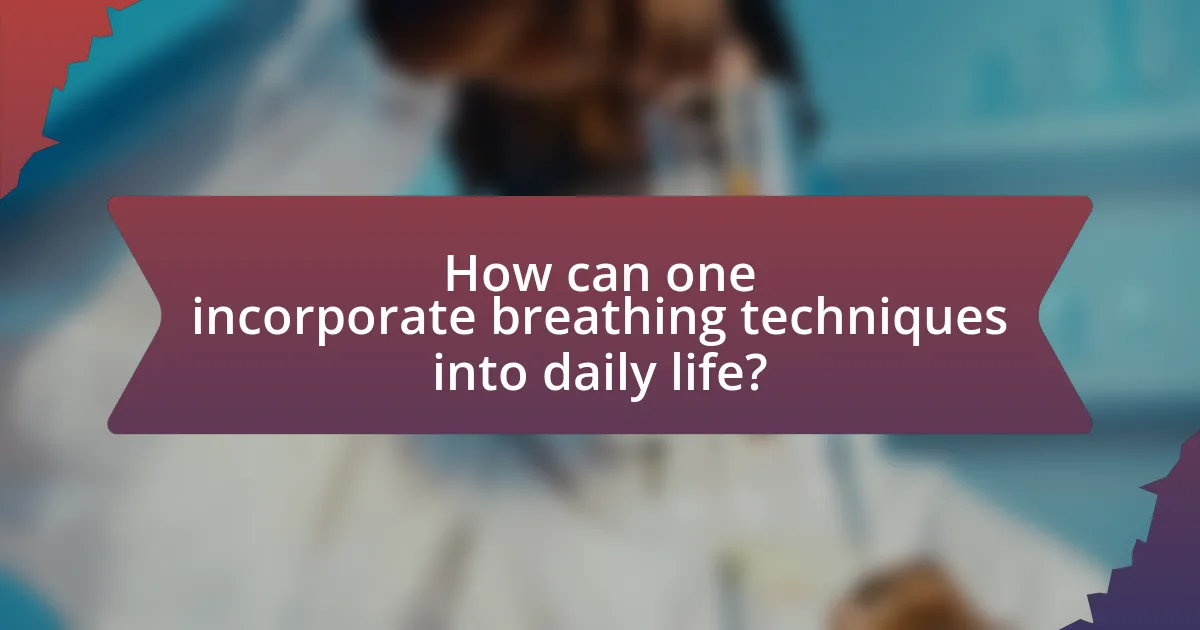
How can one incorporate breathing techniques into daily life?
One can incorporate breathing techniques into daily life by practicing deep breathing exercises regularly. For instance, individuals can set aside a few minutes each day to engage in diaphragmatic breathing, which involves inhaling deeply through the nose, allowing the abdomen to expand, and then exhaling slowly through the mouth. Research indicates that such techniques can significantly reduce stress and lower heart rate, as demonstrated in a study published in the Journal of Clinical Psychology, which found that participants who practiced deep breathing reported lower anxiety levels and improved emotional regulation. Additionally, integrating breathing exercises into daily routines, such as during breaks at work or before sleep, can enhance overall well-being and promote relaxation.
What are practical tips for practicing breathing techniques regularly?
To practice breathing techniques regularly, set specific times each day dedicated to these exercises. Consistency is key; for example, practicing for five minutes in the morning and evening can establish a routine. Additionally, use reminders on your phone or sticky notes in visible areas to prompt you to breathe deeply throughout the day. Research indicates that regular practice can significantly reduce stress and lower heart rate, as shown in a study published in the Journal of Clinical Psychology, which found that participants who engaged in daily breathing exercises reported lower anxiety levels and improved emotional regulation.
How can one create a conducive environment for breathing exercises?
To create a conducive environment for breathing exercises, one should ensure a quiet, comfortable space with minimal distractions. This can be achieved by selecting a location that is free from noise, clutter, and interruptions, which allows for focused practice. Research indicates that a calm atmosphere enhances relaxation and promotes effective breathing techniques, as evidenced by studies showing that environments with lower ambient noise levels can significantly reduce stress and improve concentration. Additionally, maintaining a comfortable temperature and using soft lighting can further enhance the experience, making it easier to engage in deep, mindful breathing.
What time of day is best for practicing breathing techniques?
The best time of day for practicing breathing techniques is in the morning. Morning practice can enhance focus and set a calm tone for the day, as studies indicate that engaging in mindfulness activities, including breathing exercises, can improve mental clarity and reduce stress levels throughout the day. Research published in the Journal of Clinical Psychology shows that morning mindfulness practices can lead to lower anxiety and improved emotional regulation, making it an optimal time for such techniques.
What common challenges might one face when learning breathing techniques?
Common challenges when learning breathing techniques include difficulty in maintaining focus, physical discomfort, and inconsistent practice. Maintaining focus can be challenging due to distractions in the environment or wandering thoughts, which can hinder the effectiveness of the techniques. Physical discomfort may arise from improper posture or tension in the body, making it hard to achieve the desired relaxation. Inconsistent practice can lead to a lack of progress, as regular engagement is essential for mastering breathing techniques. Research indicates that consistent practice is crucial for developing proficiency in any skill, including breathing techniques, as it reinforces neural pathways associated with the learned behavior.
How can one overcome distractions during practice?
To overcome distractions during practice, one can implement focused breathing techniques. These techniques, such as deep diaphragmatic breathing, help to center attention and reduce anxiety, allowing for improved concentration. Research indicates that controlled breathing can lower heart rate and stress levels, enhancing overall performance. For instance, a study published in the Journal of Clinical Psychology found that participants who practiced deep breathing experienced a significant reduction in distractions and an increase in focus during tasks. By integrating these breathing exercises into practice routines, individuals can effectively minimize distractions and enhance their ability to concentrate.
What should one do if they feel lightheaded while practicing?
If one feels lightheaded while practicing, they should immediately stop the activity and sit or lie down in a safe position. This action helps prevent falls and injuries. Additionally, taking slow, deep breaths can aid in restoring normal oxygen levels and stabilizing heart rate. Research indicates that controlled breathing techniques can effectively reduce symptoms of lightheadedness by enhancing oxygen flow and calming the nervous system.
What are some best practices for maximizing the benefits of breathing techniques?
To maximize the benefits of breathing techniques, individuals should practice deep, diaphragmatic breathing, which enhances oxygen intake and promotes relaxation. Engaging in this technique involves inhaling deeply through the nose, allowing the abdomen to expand, and exhaling slowly through the mouth. Research indicates that diaphragmatic breathing can significantly lower heart rate and reduce stress levels, as evidenced by a study published in the Journal of Clinical Psychology, which found that participants who practiced deep breathing reported lower anxiety and improved emotional regulation. Additionally, consistency in practice, such as incorporating breathing exercises into daily routines, further reinforces these benefits, making it easier to manage stress and maintain a lower heart rate over time.
